Even with a pressure cooker, beef short rib can take quite a while to cook properly. Imagine having ready to eat jars of it on a winter’s mid-week evening, just to serve with some mash and some home canned veg — what a treat.
The pressure canning process gives beef short rib a deep beefy flavour that rivals the most skillful braising.
When opening the jar, skim off and discard any fat on the top in a jar (or, put in a container in the freezer for use as beef fat for roasting potatoes in.)
Don’t waste the broth that is in the jar: drain it into a microwave-safe jug, whisk in a teaspoon or two of cornstarch (aka cornflour in the UK) and zap for 90 seconds in microwave for a phenomenal gravy to serve the ribs and mash with.
Quantities of beef short rib needed
On average, as a very rough guideline, expect to need about 500 g (1 lb) of beef short rib per ½ litre (US pint) jar of canned beef short rib (even allowing for the inflexible sizes owing to the bones, etc.)
The recipe
Jar size choices: Either ½ litre (1 US pint) OR 1 litre (1 US quart)
Processing method: Pressure canning only
Yield: varies
Headspace: 3 cm (1 inch)
Processing pressure: 10 lbs (69 kPa) weighted gauge, 11 lbs (76 kpa) dial gauge (adjust pressure for your altitude when over 300 metres / 1000 feet)
Processing time: Half-litres (pints) 75 minutes; litres (quarts) 90 minutes
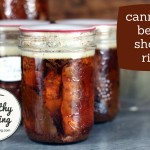
Pressure canning beef short rib
Ingredients
Instructions
- Cut ribs into lengths that will fit into the jars.
- Leave the bones in.
- Spray a skillet with cooking spray or heat a small amount of fat or oil in it.
- Brown meat in the skillet in batches; transfer browned meat to a covered bowl or pot to keep hot.
- Pack meat into half-litre (1 US pint) OR 1 litre (1 US quart) jars.
- Leave 3 cm (1 inch) headspace.
- [Optional]: add ½ teaspoon pickling salt to half-litre (1 US pint) jars; 1 teaspoon of pickling salt to 1 litre (1 US quart) jars.
- Top jars up with a boiling liquid (water from a kettle, meat, stock, or tomato juice) maintaining 3 cm (1 inch) headspace.
- Debubble; adjust headspace.
- Wipe jar rims.
- Put lids on.
- Processing pressure: 10 lbs (69 kPa) weighted gauge, 11 lbs (76 kpa) dial gauge (adjust pressure for your altitude when over 300 metres / 1000 feet)
- Processing time: half-litre (US pint) jars for 75 minutes OR 1 litre (US quart) jars for 90 minutes.
Nutrition
Processing guidelines below are for weighted-gauge pressure canners. See also if applicable: Dial-gauge pressures.
| Jar Size | Time | 0 to 300 m (0 - 1000 feet) pressure | Above 300 m (1000 ft) pressure | |
|---|---|---|---|---|
| ½ litre (1 US pint) | 75 mins | 10 lbs | 15 lb | |
| 1 litre (1 US quart) | 90 mins | 10 lbs | 15 lb |
Reference information
How to pressure can.
When pressure canning, you must adjust the pressure for your altitude.
More information on canning meat.
Recipe notes
- Instead of the salt, you can use a non-bitter, non-clouding salt sub. We have found Herbamare Sodium-Free performs well in that regard.
- Ball / Bernardin Complete Book (2015, page 396) suggests that if you have a lot of meat to brown, spread it out in roasting pans / trays and sear in a hot oven until brown on the outside but still rare on the inside.
- Warn people that there are bones still in the meat. It should be obvious, but you can’t be too careful.
Recipe source
This recipe comes from the USDA Complete Guide.
- Strips, Cubes or Chunks of Meat. In: United States Department of Agriculture (USDA). Complete guide to home canning. Agriculture information bulletin No. 539. 2015. Page 5- 6.
Note, the USDA also gives a raw-pack option.
Nutrition
Serving size: 100 g (3.5 oz / ⅕th of a ½ litre / US pint jar)
Per 100 g:
- 205 calories, 60 mg sodium.
- Weight Watchers PointsPlus®: 100 g (3.5 oz) = 5 points
* Nutrition info provided by https://caloriecount.about.com
* PointsPlus™ calculated by healthycanning.com. Not endorsed by Weight Watchers® International, Inc, which is the owner of the PointsPlus® registered trademark.
Leave the bones in
For beef, the USDA Complete Guide (2015) says, “Remove large bones.” [1] United States Department of Agriculture (USDA). Complete guide to home canning. Agriculture information bulletin No. 539. 2015. Page 5-6.
The bones in short-ribs would count as small bones.
But again, do remember to remind diners that there are bones in the ribs (even if it should be obvious.)
The canning broth
The USDA Complete Guide (2015) advises to fill with a boiling liquid (water from a kettle, meat, stock, or tomato juice). In their advice the liquid is meant to be unthickened.
The Ball / Bernardin Complete Book (2015) allows the canning broth for cubes or strips of meat to be slightly thickened with Clearjel. “If desired, ClearJel can be used to lightly thicken the broth in this recipe.” [2]Kingry, Judi and Lauren Devine. Ball / Bernardin Complete Book of Home Preserving. Toronto: Robert Rose. 2015. Page 397. They do not state what “lightly” means.
The canning liquid almost cries out for a tablespoon or two of red wine, red vermouth or sherry to be added, but USDA Extension Agents slap the fingers of anyone who even thinks about it, and HealthyCanning hasn’t found any reputable source that suggests or endorses it, either.
That being said, Wisconsin Extension is less hard-core. Barb Ingham from Wisconsin says, “You may however safely can meat without added salt, and you may safely add seasoning such as a garlic clove, onion, or herbs to each jar.” [3] Ingham, Barb. Safe Preserving: Canning Meat. Blog entry 9 October 2013. Accessed September 2015 at https://fyi.uwex.edu/safepreserving/2013/10/09/safe-preserving-canning-meat/.
How much fat to use while browning the meat?
When canning meat, you don’t want too much fat involved, because it can interfere with the seal of the jar, and go rancid in storage.
You have to use your own judgement, as you don’t get any precise guidance.
The USDA Complete 2015 instructions say, “Precook meat until rare by roasting, stewing, or browning in a small amount of fat.” (Page 5-6).
The Ball / Bernardin Complete Book says, “.. brown it in a skillet, over medium heat, using no more than 1 tbsp of added fat or vegetable oil.” (2015, page 396.)
The Ball / Bernardin advice isn’t much more help, because they don’t say per what quantity of meat.
References

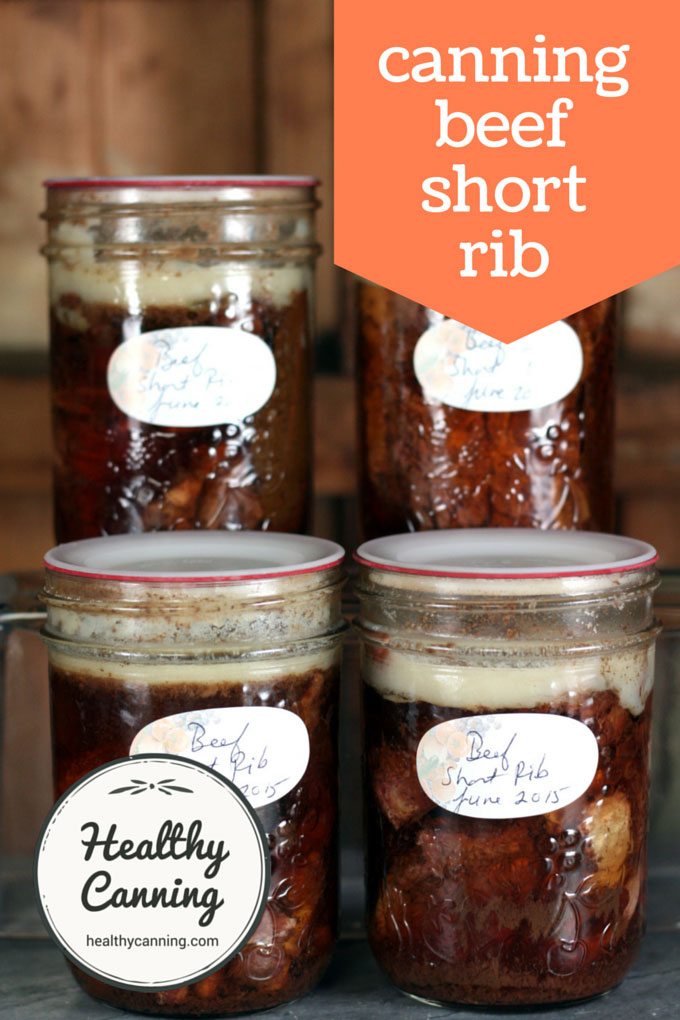
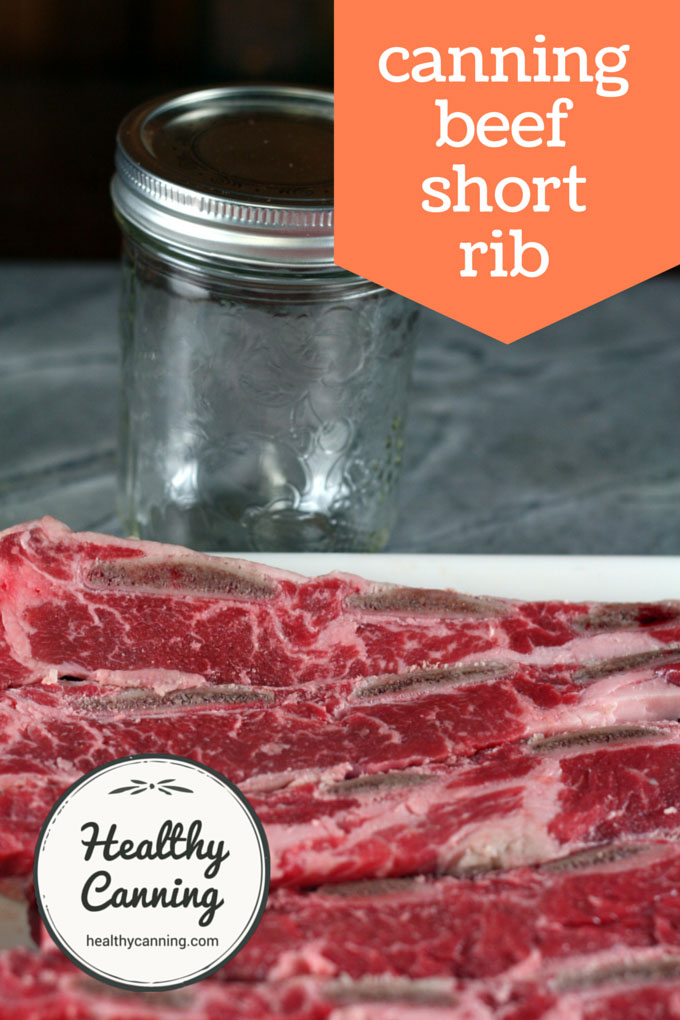
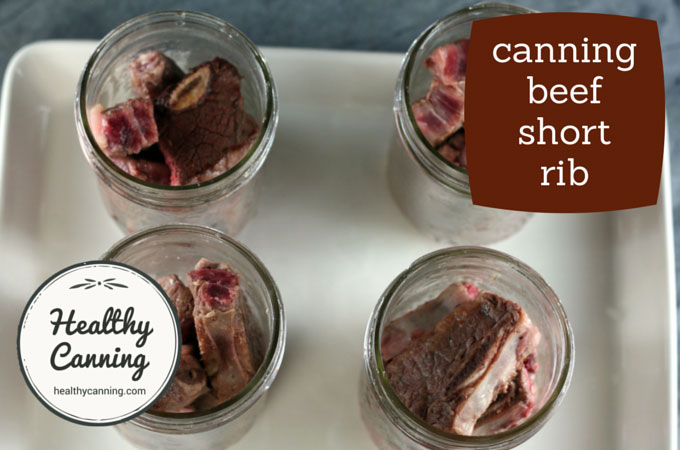
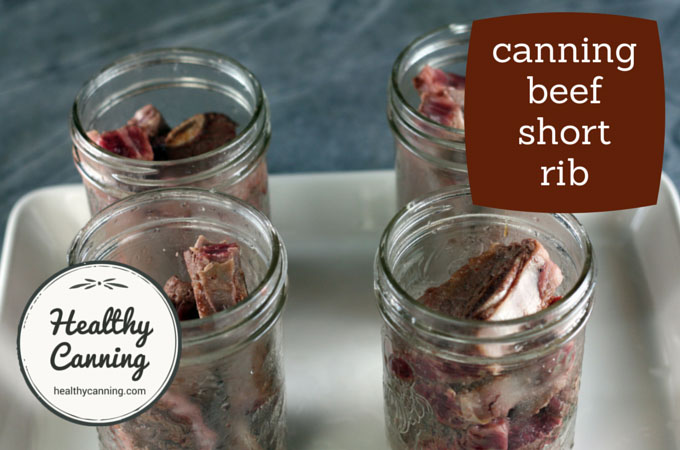
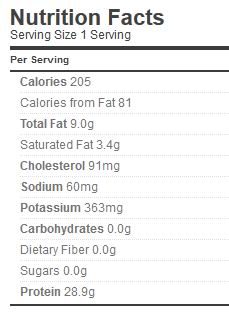
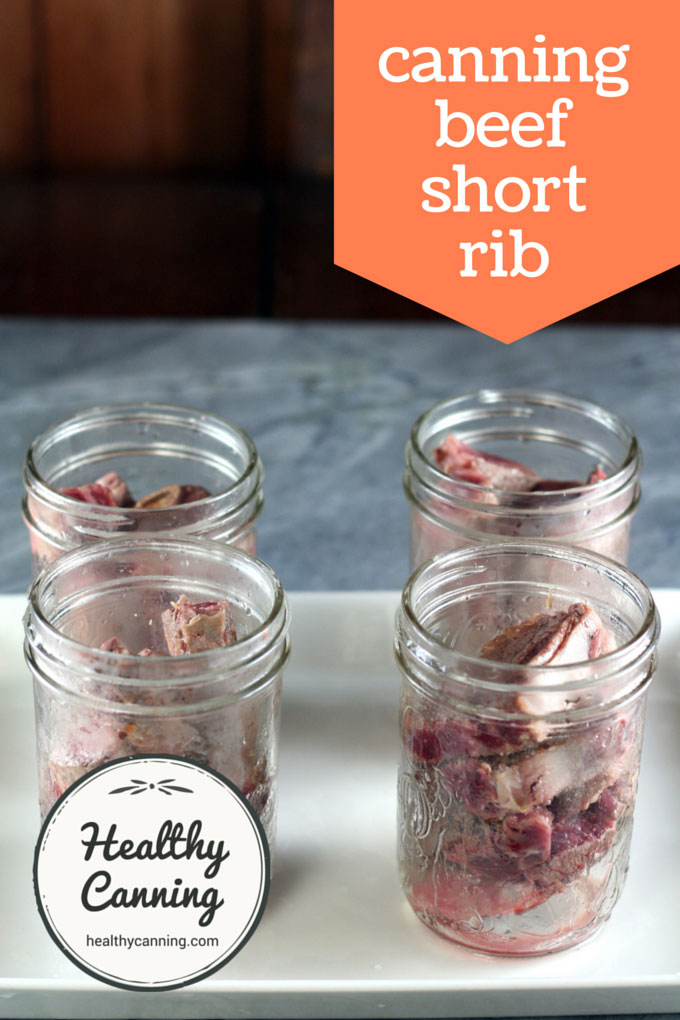
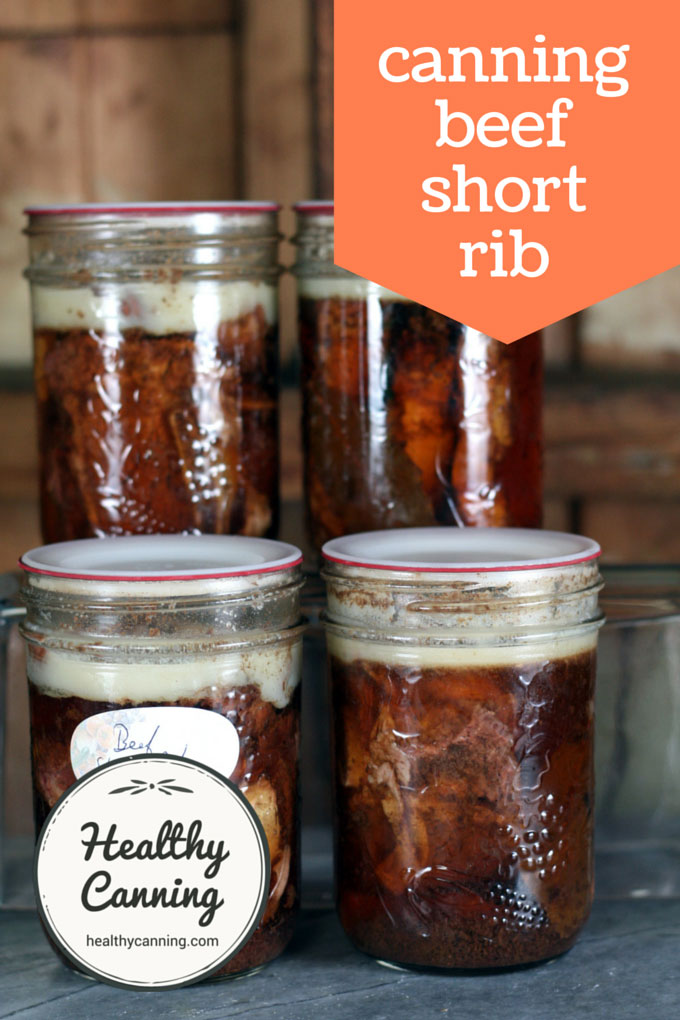
Jeanne
I’ve been canning meat (all cuts of beef, pork, chicken and venison) for weeks now. I canned four turkeys just this weekend. And I have put up 175 jars. This includes wonderful broth and stock. AND I have followed the guide lines of Healthy Canning.
Every jar sealed properly. And my son keeps raiding the pantry for his lunches!!!
Thanks, Healthy Canning.